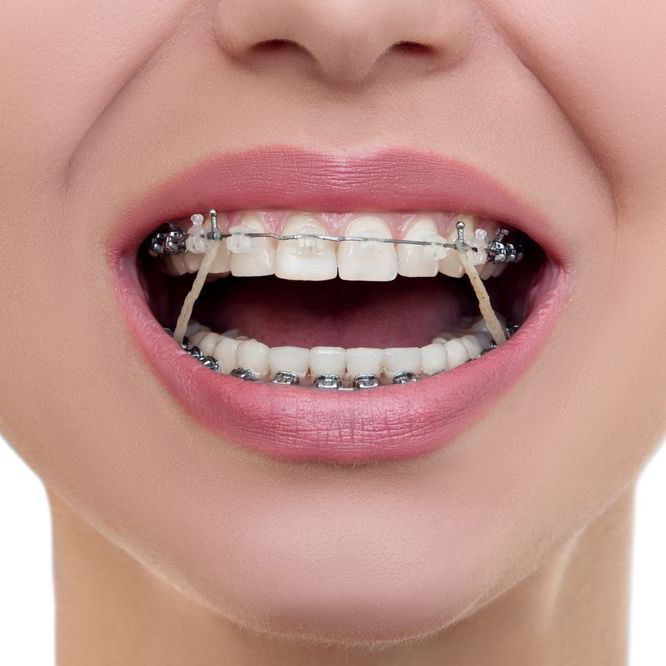
The Purposes of Rubber Bands with Braces: Enhancing Orthodontic Treatment
Braces have long been a popular solution for correcting misaligned teeth and achieving a beautiful smile. They consist of various components that gradually shift teeth into their desired positions. One such component is rubber bands, also known as elastics, which play a crucial role in orthodontic treatment. Rubber bands provide a powerful tool for orthodontists, enabling them to address specific dental issues and guide teeth and jaws into proper alignment. By understanding the purposes and benefits of rubber bands with braces, patients can gain a deeper appreciation for their role in achieving a straight and healthy smile. Moreover, recognizing the importance of orthodontic treatment in improving aesthetics and oral health can motivate individuals to pursue the necessary dental care for a lifetime of confident smiles.
Table of Contents
- Understanding Rubber Bands in Orthodontics
- Improving Jaw Alignment
- Correcting Bite Issues
- Facilitating Tooth Movement
- Enhancing Treatment Efficiency
- Customizing Treatment Plans
- Types of Rubber Bands
- How to Wear Rubber Bands
- Maintaining Proper Elastic Wear
- Duration of Elastic Wear
- Common Challenges with Rubber Bands
- Potential Discomfort and Pain
- Maintaining Good Oral Hygiene
- Replacing Rubber Bands
- Conclusion
- FAQs (Frequently Asked Questions)
Understanding Rubber Bands in Orthodontics
Rubber bands are an essential component of braces that aid in correcting various dental issues. These small elastic bands are attached to brackets or hooks on the braces and apply gentle pressure to the teeth and jaws. Doing so, they help orthodontists achieve specific treatment goals, such as improving jaw alignment, correcting bite issues, facilitating tooth movement, and enhancing overall treatment efficiency.
Improving Jaw Alignment
One of the primary purposes of rubber bands is to address jaw misalignment, commonly known as malocclusion. Malocclusion occurs when the upper and lower jaws do not meet properly, leading to an improper bite. When strategically placed, rubber bands exert forces that guide the jaws into a more harmonious position. This helps achieve proper alignment, allowing for improved biting and chewing functionality.
Correcting Bite Issues
Rubber bands significantly correct various bite issues, including overbite, underbite, crossbite, and open bite. These conditions occur when the upper and lower teeth do not fit together correctly, causing functional and aesthetic concerns. Attaching rubber bands in specific configurations allows orthodontists to gradually shift the teeth into proper alignment, align the jaws, and correct bite discrepancies.
Facilitating Tooth Movement
Another vital purpose of rubber bands is facilitating tooth movement within the dental arch. Teeth are not fixed rigidly in the jawbone but can be gently guided to their desired positions. Rubber bands provide the force to move teeth horizontally, vertically, or in rotations, ensuring optimal alignment and proper occlusion. This controlled tooth movement contributes to the overall success of the orthodontic treatment.
Enhancing Treatment Efficiency
Rubber bands significantly enhance the efficiency of orthodontic treatment by accelerating the desired tooth movements. They can expedite the alignment process by applying additional forces to specific areas, shortening the overall duration of wearing braces. The proper and consistent use of rubber bands, as instructed by the orthodontist, ensures optimal treatment progress and helps patients achieve their desired results in a timely manner.
Customizing Treatment Plans
Orthodontic treatment is highly individualized, with each patient having unique dental needs. Rubber bands allow orthodontists to customize treatment plans to address specific issues effectively. By strategically placing rubber bands in specific configurations, orthodontists can target specific tooth movements, correct misalignments, and achieve precise results. This level of customization ensures that each patient receives personalized care tailored to their unique requirements.
Types of Rubber Bands
Different types of rubber bands are used in orthodontics, each serving a specific purpose. Classifications include interarch rubber bands, which connect the upper and lower jaws, and intra-arch rubber bands, which connect brackets within the same arch. Orthodontists select the appropriate type, size, and strength of rubber bands based on the patient's needs, ensuring optimal treatment outcomes.
How to Wear Rubber Bands
Wearing rubber bands properly is essential for the success of orthodontic treatment. Patients must follow their orthodontist's instructions carefully. Generally, rubber bands are attached to specific brackets or hooks on the braces, forming a triangular or rectangular configuration. It is important to maintain consistent wear, as instructed, and replace the bands regularly to ensure the desired forces are continuously applied.
Maintaining Proper Elastic Wear
Proper elastic wear is crucial to achieving the desired treatment outcomes. Patients should wear rubber bands exactly as directed by their orthodontist. Consistency is key; they should only remove them while eating, brushing, or flossing. Maintaining a routine of wearing rubber bands as prescribed ensures the continuous application of corrective forces, maximizing the effectiveness of treatment.
Duration of Elastic Wear
The duration of wearing rubber bands varies depending on the treatment plan and the case's complexity. Some patients may need to wear rubber bands all the time, while others may only wear them during specific times of the day or night. It is important to follow the orthodontist's instructions regarding the duration of elastic wear to achieve the desired treatment goals efficiently.
Common Challenges with Rubber Bands
While rubber bands are highly effective, some challenges may arise. Awareness of these challenges is important to ensure proper orthodontic care.
Potential Discomfort and Pain
Initially, wearing rubber bands may cause some discomfort or soreness. This is normal as the teeth and jaws adjust to the added pressure. Over-the-counter pain relievers can help alleviate any temporary discomfort. If persistent pain or irritation occurs, it is essential to consult the orthodontist for guidance.
Maintaining Good Oral Hygiene
Proper oral hygiene is crucial when wearing rubber bands. Maintaining regular brushing and flossing habits is essential to keep the teeth and braces clean. Rubber bands can trap food particles, so diligent oral hygiene practices are necessary to prevent plaque buildup, tooth decay, and gum disease.
Replacing Rubber Bands
Rubber bands lose their elasticity over time, so it is important to replace them regularly. Failing to replace worn-out rubber bands can reduce their effectiveness in achieving tooth movement. Patients should follow the orthodontist's instructions regarding band replacement intervals to ensure optimal treatment progress.
Rubber bands are integral to the success of orthodontic treatment with braces. They serve multiple purposes, including improving jaw alignment, correcting bite issues, facilitating tooth movement, enhancing treatment efficiency, and customizing treatment plans. By wearing rubber bands as directed by the orthodontist, patients can achieve desired results in a timely manner. Understanding the importance of rubber bands and following proper wear and care instructions can help individuals attain a beautiful and properly aligned smile.
FAQs (Frequently Asked Questions)
- How long do I need to wear rubber bands with braces?
The duration varies depending on your treatment plan and specific case. We will provide detailed instructions regarding the duration of elastic wear. - Are rubber bands painful to wear?
Initially, you may experience some discomfort or soreness. Over-the-counter pain relievers can help alleviate temporary discomfort. If persistent pain occurs, consult your orthodontist. - Can I remove rubber bands while eating?
Yes, you should remove rubber bands while eating to avoid damage. Remember to reapply them immediately after finishing your meal. - How often should I replace rubber bands?
Rubber bands lose their elasticity over time. Follow your orthodontist's instructions regarding replacement intervals to ensure their effectiveness. - Is proper oral hygiene important when wearing rubber bands?
Yes, maintaining good oral hygiene is crucial. Brush and floss regularly to prevent plaque buildup, tooth decay, and gum disease.
READY FOR A SMILE THAT SHINES?
SHARE











